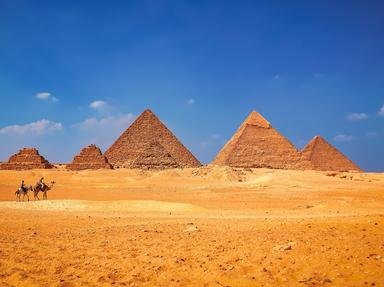Quiz Answer Key and Fun Facts
1. The first strike occurred while Egyptians were working on this pyramid.
2. Besides the fact that she was a woman, how was Hatshepsut different from most of the other pharaohs?
3. What type of government did Ancient Egypt have?
4. Who discovered the Rosetta Stone?
5. Which of the following theories is the most plausible theory on how the Pyramids at Giza were built?
6. Ankhesenamun was the wife of which New Kingdom pharaoh?
7. Pregnant Egyptian women often urinated on a bag of barley and a bag of wheat. If barley germinated first, then what would that mean?
8. Hieroglyphics were written in two colors. Identify those colors.
9. Who won the Battle of Kadesh?
10. Who attacked Egypt circa 1800 BC causing the 1st split?
Source: Author
Buddy1
This quiz was reviewed by FunTrivia editor
bloomsby before going online.
Any errors found in FunTrivia content are routinely corrected through our feedback system.


